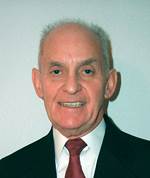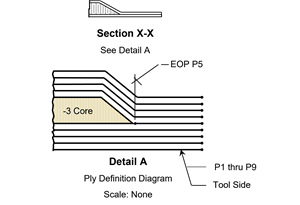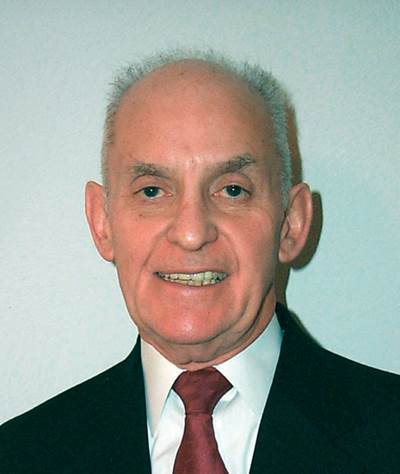Composites testing: The continuing standards dilemma
Dr. Donald F. Adams revisits the topic of global test standardization, suggesting a simple but unlikely fix to the lack of harmonization.
In May 2007, this column was devoted to the standardization of test methods and the need for same. A detailed discussion of the evolution of standards was presented, and it is, perhaps, well worth rereading today. That column was followed in the next issue (July 2007) by a discussion of attempts to achieve globalization and harmonization (see “Editors Picks,” at top right). More than five years have passed since these articles were written. It’s time for a progress report.
Globalization — the spread of composites technology, including composites testing, independent of geographical and political boundaries — has exploded during the past five years. The commercial aircraft industry has led the way, driven particularly by The Boeing Co. (Chicago, Ill.) and Airbus (Toulouse, France). These major commercial airframe manufacturers have involved many subcontractors around the world in developing the new materials and processes they need. Thus, they are spreading these advanced technologies around the world. This has given many individuals, companies, countries and special-interest groups worldwide a strong opportunity to exert their individual opinions and biases on the current technology. That is, we now have more concepts than ever about the best way to proceed. This definitely includes test methods. Although many of these concepts will fall into disuse as they are eventually shown to be deficient or ineffective, some will become new standards or additions to existing standards.
In summary, globalization has led to much new research activity on an international scale in a relatively short time period, and as such, it has been a very favorable development.
Long before globalization, however, various groups around the world had developed their own standard methods for testing composites. These were discussed in my May 2007 column. As the composites industry has become a more global enterprise, these groups were no longer isolated and came into increasing contact with one another. This led to recognition of the need for harmonization. That is, the groups sought to answer this question: When two (or more) different test methods follow different procedures to obtain data on the same material property, do the different methods produce statistically equivalent results, such that the methods can be used interchangeably?
About 10 years ago, it was recognized that the answer to this question was “not necessarily.” The need for harmonization of test methods was acknowledged, and some preliminary work was conducted during the next few years. This included gathering experimental data from the literature and generating new data to permit direct comparisons of selected test methods. This was a time-consuming, difficult and expensive activity. Unfortunately, the initial enthusiasm for this approach and the pursuit of harmonization has faltered, with little sign, at present, that the movement will regain its vitality. Instead, the oft-used approach, currently, is to select a specific standard test method for the particular design application at hand and strictly follow it. And because there often are multiple test methods available to measure a particular property, many different standards are currently being followed and many methods are used, with little or no attempt at harmonization.
In the global aerospace industry, most of the testing standards in use at present are derivatives of U.S. aerospace industry procedures formalized over the years by ASTM International (West Conshohocken, Pa.). That is, most of the aerospace-oriented standards (e.g., DIN, EN, prEN, ISO) have been taken from the ASTM standards, typically with only minor changes.
Unfortunately, these minor changes are the source of many current major problems. A test fixture developed for one standard will not necessarily satisfy the requirements of another standard. And ASTM itself caused many of these problems when its committees developed these test methods by insisting on using “soft conversions” of dimensions from the U.S. Customary (English) units when they calculate the S.I. (metric) unit values for their “dual unit” standards. That is, rather than using direct (exact) conversions of the U.S. Customary units to S.I. units (hard conversions), they have mandated the practice of arbitrarily rounding conversions to convenient (hence, the name "soft") even numbers. For example, a 0.25-inch diameter loading or support cylinder on a flexure fixture becomes a 6-mm diameter cylinder in the metric version of the standard. It has been well demonstrated, both analytically and experimentally, that this small difference in size has no measurable effect on the experimental results obtained. Nevertheless, the strict follower of the metric standard will not use an available test fixture that has 0.25-inch diameter cylinders.
Another example is the Open-Hole Compression Test Method (ASTM D6484), adopted directly from a Boeing internal document. The Boeing specimen was 12 inches long. When the ASTM standard was written, the “soft” metric conversion was 300 mm. But this is 4.8-mm shorter than the original Boeing specimen and, therefore, the English version of the ASTM D6484 test fixture is not suitable for use. This is because the Boeing test provides 0.2 inch/5.1 mm of clearance between the two halves of the fixture to allow for elastic compression of the specimen before failure at the hole. There will be insufficient clearance (only 0.3 mm) if the shorter S.I. units specimen is used in the U.S. Customary units fixture. The fixture will bottom out before specimen failure is achieved. Dozens of similar examples could be listed.
The ASTM soft conversions issue aside, other standards organizations also introduced minor changes that introduce similar complications. The result is that many testing laboratories are forced to have two (or more) test fixtures available to perform the same test, depending on the standard they are obligated to follow for a particular customer.
It’s possible that all of this could be justified if the differences mattered. But they don't. For example, let us follow-up with the Open-Hole Compression test method. At essentially the same time that Boeing developed its test configuration (in the mid-1980s), Northrop Corp. (West Falls Church, Va.) developed its own test method. Although Northrop’s method also required a 0.25-inch diameter hole, its specimen is only 1-inch wide rather than 1.5-inches wide and, more importantly, only 3-inches long. It was later clearly shown that the Northrop test method produced the same test results as the Boeing method, even though the specimen was 9-inches/229-mm shorter. It becomes obvious that the small (4.8 mm) difference between the U.S. Customary units specimen length and the S.I. units length for the Boeing specimen itself is of little technical importance.
ASTM could single-handedly make a major contribution to solving these problems by simply converting all of their standards to S.I. units only and abandoning all English units. ASTM could even keep the existing soft conversions. However, the U.S. aerospace industry is strongly opposed to converting to S.I. units, and because it has a strong influence on ASTM, the latter is unlikely to make the change.
This opens the possibility that, in this age of growing globalization, the remainder of the world will leave the U.S. and its U.S. Customary units behind, isolated from the global mainstream. Perhaps, in fact, this is already happening.
Related Content
Carbon fiber, bionic design achieve peak performance in race-ready production vehicle
Porsche worked with Action Composites to design and manufacture an innovative carbon fiber safety cage option to lightweight one of its series race vehicles, built in a one-shot compression molding process.
Read MoreActive core molding: A new way to make composite parts
Koridion expandable material is combined with induction-heated molds to make high-quality, complex-shaped parts in minutes with 40% less material and 90% less energy, unlocking new possibilities in design and production.
Read MoreASCEND program update: Designing next-gen, high-rate auto and aerospace composites
GKN Aerospace, McLaren Automotive and U.K.-based partners share goals and progress aiming at high-rate, Industry 4.0-enabled, sustainable materials and processes.
Read MoreThe basics of composite drawing interpretation
Knowing the fundamentals for reading drawings — including master ply tables, ply definition diagrams and more — lays a foundation for proper composite design evaluation.
Read MoreRead Next
Why standardize composites test protocols?
Every column I write for HPC eventually refers to “standard” test methods. But why are standards written? What groups promote these standards, and who actually writes them? Most importantly, why do the rest of us need to follow their standards, and what if we don’t? To answer the first question, we must step back into
Read MoreComposites test method globalization and harmonization
In my previous column, I discussed the need for standardization of test methods and the progress that has been made in recent years (see “Related Content,” at left). However, we know from that column, and many preceding it, that when we attempt to determine material properties, there is often more than one
Read MoreVIDEO: High-volume processing for fiberglass components
Cannon Ergos, a company specializing in high-ton presses and equipment for composites fabrication and plastics processing, displayed automotive and industrial components at CAMX 2024.
Read More





















